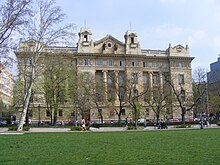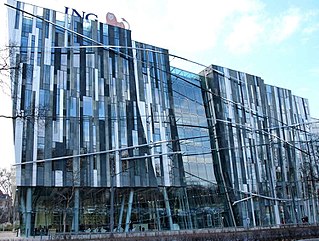
The economy of Hungary is a high-income mixed economy, ranked as the 9th most complex economy according to the Economic Complexity Index. Hungary is a member of the Organisation for Economic Co-operation and Development (OECD) with a very high human development index and a skilled labour force, with the 22nd lowest income inequality by Gini index in the world. The Hungarian economy is the 53rd-largest economy in the world with $265.037 billion annual output, and ranks 41st in the world in terms of GDP per capita measured by purchasing power parity. Hungary has an export-oriented market economy with a heavy emphasis on foreign trade; thus the country is the 35th largest export economy in the world. The country had more than $100 billion of exports in 2015, with a high trade surplus of $9.003 billion, of which 79% went to the European Union (EU) and 21% was extra-EU trade. Hungary's productive capacity is more than 80% privately owned, with 39.1% overall taxation, which funds the country's welfare economy. On the expenditure side, household consumption is the main component of GDP and accounts for 50% of its total, followed by gross fixed capital formation with 22% and government expenditure with 20%.

The forint is the currency of Hungary. It was formerly divided into 100 fillér, but fillér coins are no longer in circulation. The introduction of the forint on 1 August 1946 was a crucial step in the post-World War II stabilisation of the Hungarian economy, and the currency remained relatively stable until the 1980s. Transition to a market economy in the early 1990s adversely affected the value of the forint; inflation peaked at 35% in 1991. Between 2001 and 2022, inflation was in single digits, and the forint has been declared fully convertible. In May 2022, inflation reached 10.7% amid the war in Ukraine and economic uncertainty. As a member of the European Union, the long-term aim of the Hungarian government may be to replace the forint with the euro, although under the current government there is no target date for adopting the euro.

The krone was the official currency of Austria-Hungary from 1892 until the dissolution of the empire in 1918. The subunit was one hundredth of the main unit, and was called a Heller in the Austrian and a fillér in the Hungarian part of the Empire.
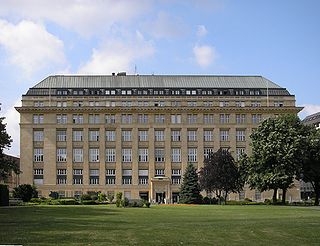
The Oesterreichische Nationalbank is the Austrian member of the Eurosystem and was the monetary authority for Austria from 1923 to 1938 and from 1945 to 1998, issuing the Austrian schilling.
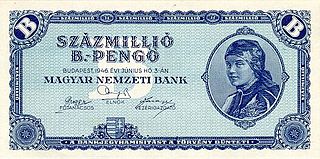
The pengő was the currency of Hungary between 1 January 1927, when it replaced the korona, and 31 July 1946, when it was replaced by the forint. The pengő was subdivided into 100 fillér. Although the introduction of the pengő was part of a post-World War I stabilisation program, the currency survived for only 20 years and experienced the most serious case of hyperinflation ever recorded.

The Austro-Hungarian gulden was the currency of the lands of the House of Habsburg between 1754 and 1892, when it was replaced by the Austro-Hungarian krone as part of the introduction of the gold standard. In Austria, the gulden was initially divided into 60 kreuzers. The currency was decimalized in 1857, using the same names for the unit and subunit.
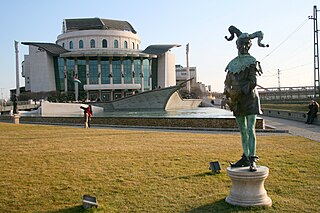
The National Theatre, located in Budapest originally opened in 1837. Since then, it has occupied several locations, including the original building at Kerepesi Street, the People's Theatre at Blaha Lujza Square, as well as Hevesi Sándor Square, its longest temporary location. It currently occupies the National Theatre building, which opened March 15, 2002.
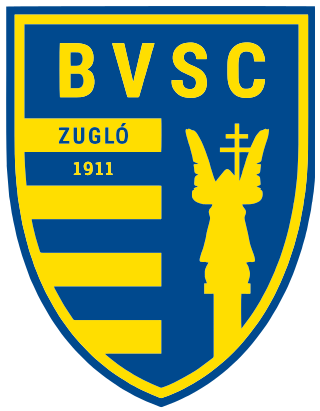
Budapesti Vasutas Sport Club-Zugló commonly known as BVSC-Zugló is a professional football club based in Zugló, Budapest, Hungary, that competes in the Nemzeti Bajnokság II. The club was founded in 1911. Its football section became closed in 2001, but has now reopened, while other sections that are still operational are table tennis, wrestling, water polo. The table tennis department won the European Cup of 1980 and several national championships.

The Hungarian korona was the replacement currency of the Austro-Hungarian Krone/korona amongst the boundaries of the newly created post-World War I Hungary. It suffered a serious inflation and was replaced by the pengő on 1 January 1927.
Hungarian forint coins are part of the physical form of current Hungarian currency, the Hungarian forint. Modern forint coins have been struck since 1946 and reflect the changes of post-World War II Hungarian history.
The paper money of the Hungarian korona was part of the circulating currency in the post-World War I Kingdom of Hungary until the introduction of the pengő in 1927. The variety of the banknotes and treasury notes and the variety of issuing authorities reflect the chaotic postwar situation in the country.
György Surányi is Hungarian economist the CEO and chairman of CIB Bank and former president of the Hungarian National Bank.

The Magyar Theatre is a theatre operating in Budapest, Hungary. Its company started on August 22, 1837 as the first major Hungarian-language theatrical company in the city. They operated under this label until August 8, 1840, when the name was changed to National Theatre of Hungary. Switching homes two times, the company moved to its current building in 1966. The name Magyar Theatre was restored on September 1, 2000, with the opening of the new National Theatre.

György Matolcsy is a Hungarian politician and economist, current governor of the Hungarian National Bank (MNB). He also served as Minister of National Economy from 2000 to 2002 during the first cabinet of Viktor Orbán and from 2010 to 2013 in the Second Orbán Cabinet.

György Szapáry is a Hungarian–Belgian economist, who served as the Hungarian Ambassador to the United States between 2011 and 2015. He was also a former Deputy Governor of the Hungarian National Bank.

András Simor is a Hungarian economist, who served as governor of the Hungarian National Bank (MNB) from 2007 to 2013. He was replaced by György Matolcsy.
Imre Taussig was a Hungarian international footballer who played as a forward right winger. Taussig, who was Jewish, played club football for MTK for his entire career, winning three titles, and also represented Hungary national team at the international level, earning 5 caps between 1914 and 1918.
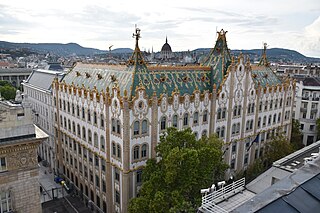
The Hungarian Postal Savings Bank was a major savings institution in Hungary, established in 1886 as the Hungarian Royal Postal Savings Bank and terminated in 1948. It is well remembered for its head office in District V of Budapest, a striking Art Nouveau building designed by Ödön Lechner.

The Austro-Hungarian Bank was the central bank of the Habsburg Monarchy in the 19th and early 20th centuries.
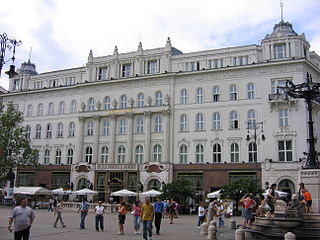
The Hungarian Commercial Bank of Pest was Hungary's first modern bank, established in 1840–1841. It was nationalized in the early Communist era and repurposed in 1950 as the Hungarian Trade Bank, later known as MKB Bank.

